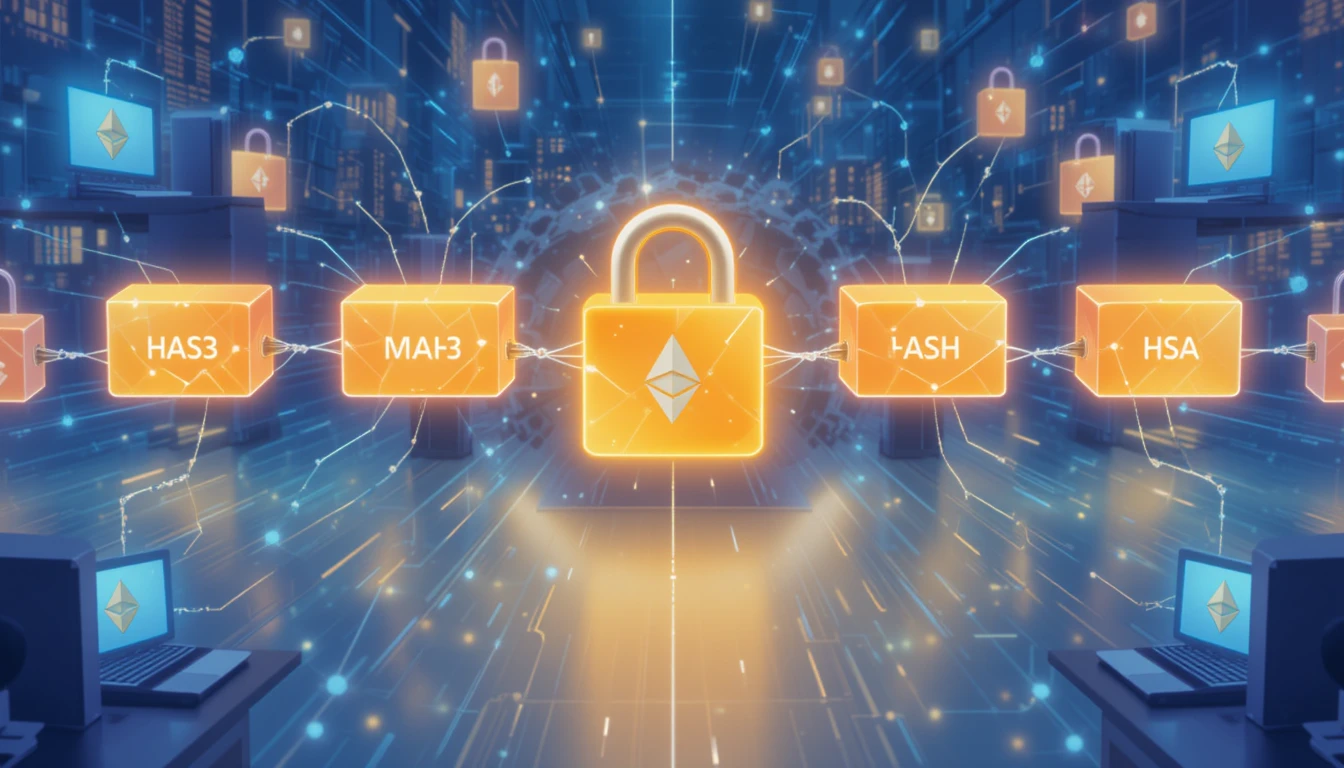Introduction: What Is Blockchain?
Have you ever wondered how Bitcoin or other cryptocurrencies work behind the scenes? The answer is a powerful technology called blockchain.
In simple words, a blockchain is a digital record book. Instead of being kept in one place, it is shared across many computers around the world. It records transactions in a way that is secure, transparent, and unchangeable.
This guide will help you understand how blockchain works without any technical jargon.
🔗 What Is a Block?
A block is a digital “page” in the record book. Each block holds:
- A list of transactions
- A time and date stamp
- A unique code (called a hash)
- The hash of the block before it
Every block is linked to the block before it — that’s why it’s called a “chain” of blocks: blockchain.
📚 Example in Real Life
Imagine you’re writing in a notebook with friends. Everyone has a copy. Every time someone adds a page (block), everyone else gets a copy too.
Once the page is written and everyone agrees it’s correct, you can’t change it. If someone tries to cheat, their copy won’t match the others — and it will be rejected.
That’s how blockchain keeps things safe and honest.
💻 How Are New Blocks Added?
New blocks are added through a process called mining (for Bitcoin) or validation (in other blockchains like Ethereum 2.0).
Here’s how it works:
- A transaction happens (like someone sending Bitcoin).
- The transaction is sent to the blockchain network.
- Miners or validators check if the transaction is valid.
- Once verified, the transaction is grouped into a block.
- That block is added to the chain and shared with everyone.
🔐 What Makes Blockchain Secure?
Blockchain is secure because:
- 🔄 It’s decentralized — no single person or company controls it.
- 📜 Once data is added, it can’t be changed.
- 🧠 Everyone in the network checks the data to keep it honest.
- 🧩 It uses cryptography to protect information.
This system builds trust even between strangers.
🏛️ Centralized vs Decentralized Systems
| Feature | Centralized System | Blockchain (Decentralized) |
|---|---|---|
| Control | One authority (like a bank) | No single controller |
| Security risk | Higher (hacks, misuse) | Lower (distributed system) |
| Transparency | Low | High |
| Data change | Easy to alter | Almost impossible |
| Trust required | Yes | No — trust the technology |
💡 Use Cases of Blockchain (Not Just Crypto)
While blockchain started with Bitcoin, it’s now used in many industries:
- Banking – Fast, secure money transfers
- Healthcare – Secure patient records
- Supply Chain – Tracking goods and products
- Voting – Transparent digital elections
- Digital Identity – Safer online ID systems
🛠️ Types of Blockchain
There are three main types:
| Type | Description | Example |
|---|---|---|
| Public Blockchain | Open to everyone | Bitcoin, Ethereum |
| Private Blockchain | Limited access, used by companies | IBM Blockchain |
| Consortium Blockchain | Controlled by a group of organizations | Hyperledger |
🧠 Important Terms (Explained Simply)
- Hash: A secret code that identifies each block. If anything changes, the code changes too.
- Node: A computer that stores a full copy of the blockchain.
- Miner: A person or machine that solves puzzles to add new blocks.
- Smart Contract: A self-executing agreement stored on the blockchain.
✅ Key Benefits of Blockchain
- ✅ No need for middlemen like banks
- ✅ Transparent and trackable
- ✅ Reduces fraud and errors
- ✅ Data stays safe and trusted
- ✅ Works globally, 24/7
⚠️ Challenges of Blockchain
Despite its power, blockchain also has some challenges:
- ⚡ Uses a lot of energy (especially mining)
- 🐢 Can be slow when too many users join
- 🤔 Still new — many people don’t understand it yet
- 📈 Prices of crypto on blockchains can be very volatile
But developers are working to make blockchains faster and more eco-friendly.
📌 Key Takeaways
- Blockchain is a digital, secure, and shared record book.
- It stores data in linked blocks that can’t be changed.
- Everyone in the network checks each block to prevent fraud.
- Blockchain powers crypto but is useful in many industries.
- It’s transparent, secure, and doesn’t need a middleman.
📚 Final Words: Why Should You Care?
Blockchain is more than just a crypto buzzword — it’s a revolutionary way of keeping records and building trust without needing a central authority.
Whether you’re using crypto or not, understanding blockchain is important. It’s the future of money, contracts, identity, and even governments.
❓FAQs – Frequently Asked Questions
| Question | Answer |
|---|---|
| What is a blockchain in one sentence? | A blockchain is a secure digital ledger that records transactions across many computers. |
| Can anyone use blockchain? | Yes, public blockchains are open to everyone. |
| Is blockchain only for cryptocurrency? | No, it’s also used in healthcare, supply chains, and more. |
| Can blockchain be hacked? | It’s very difficult due to its structure and encryption. |
| What makes blockchain trustworthy? | Its decentralization and transparency build trust automatically. |
